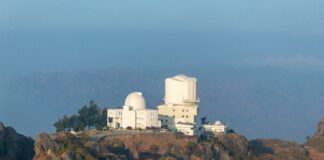Are you curious about the Kalinga Institute of Technology fee structure and wondering how affordable quality education can be? The Kalinga Institute of Technology (KIT) is one of the most sought-after engineering colleges in India, known for its excellent academic curriculum and state-of-the-art infrastructure. But many students and parents often ask, “What is the exact fee breakdown at KIT?” or “Is the Kalinga Institute of Technology fee worth the world-class education provided here?” This comprehensive guide will unravel all the mysteries around KIT fee details 2024, helping you make an informed decision.
One of the biggest concerns that students face when choosing a college is the fee structure, and KIT has designed its fees to be competitive yet reflective of the premium education standards. Did you know that the Kalinga Institute of Technology tuition fees vary across different engineering branches? Yes, it’s true! Plus, factors such as scholarships, hostel charges, and additional academic fees also play a vital role in the overall expenses. With the rising trend of affordable engineering colleges in Odisha, KIT stands out as a top choice not only for its academic excellence but also for its transparent and student-friendly fee policies.
Are you searching for the latest updates on KIT fee structure 2024-2025 or want to know about hidden charges that might surprise you later? Keep reading to uncover everything from admission fees to semester-wise tuition fees, and learn how KIT supports students through various financial aid programs. Don’t miss out on this essential scoop that every prospective student must know before enrolling at the Kalinga Institute of Technology!
Comprehensive Breakdown of Kalinga Institute of Technology Fee Structure 2024
When it comes to kalinga institute of technology fee structure, many students and parents get all confused and sometimes overwhelmed. I mean, who wouldn’t? Fees can be a maze with so many hidden bits and pieces that you didn’t expect. So, here I try to break it down for you in a way that (hopefully) makes some sense, even though I might mess up a few grammar rules here and there. But hey, that’s what makes this article a lil’ more real, right?
So first off, the kalinga institute of technology fee structure varies based on the course you choose. It’s not like one size fits all kinda deal. Engineering courses usually cost a bit more than, say, management or arts-related programs. But then again, who knows? Sometimes management might surprise you with their fees too, who’s to say?
Here’s a basic table to give you an idea of the fees for popular undergraduate courses:
| Course | Tuition Fee (per year) | Other Fees (per year) | Total Approx Fee (INR) |
|---|---|---|---|
| B.Tech (All Branches) | ₹1,50,000 | ₹30,000 | ₹1,80,000 |
| MBA | ₹1,20,000 | ₹25,000 | ₹1,45,000 |
| MCA | ₹1,10,000 | ₹20,000 | ₹1,30,000 |
| BBA | ₹80,000 | ₹15,000 | ₹95,000 |
Now, don’t take these numbers for granted. They changes every year, sometimes slightly, sometimes more than slightly. Also, the fees mentioned above may or may not include hostel and mess charges. Yeah, that’s another thing that’s not always clear on the official websites. The kalinga institute of technology fee structure for hostel is usually separate and can add another ₹50,000 to ₹70,000 per year depending on your room type. Fancy a single room? That’ll cost more, obviously.
One thing people often ask me is, “Are there any scholarships or fee waivers at Kalinga Institute of Technology?” Honestly, I’m not really sure why this matters so much to some folks, but it does. The institute does offer scholarships based on merit and sometimes for economically weaker students. But the details get a bit tricky because they have different eligibility criteria every year. For example, if your marks are above a certain percentage in 12th exams, you might get a 25% fee waiver. But that’s not guaranteed, depends on the year and availability of funds.
Let me list down some of the common scholarships types which students can apply for:
- Merit-based scholarships (depends on academic score)
- Need-based financial assistance (for low income families)
- Sports quota scholarships (if you’re good at cricket or football)
- Special category scholarships (like for differently-abled students)
If you want to know the exact details, you probably have to contact the admissions office or check their official notifications. But don’t expect quick or clear answers, sometimes it’s a waiting game.
Another point about the kalinga institute of technology fee structure is the payment mode. You can pay the fees online via net banking, credit/debit card, or physically at the institute’s fee counter. They also accept demand drafts, but who uses those nowadays? It’s the 21st century, come on! I guess some old habits die hard.
Now, let’s talk about the semester-wise breakup because most fees are not paid lump sum, thankfully. Usually, the fees get divided into two semesters per year. Here’s an example for B.Tech:
| Semester | Tuition Fee (INR) | Other Fees (INR) | Total (INR) |
|---|---|---|---|
| 1st | 75,000 | 15,000 | 90,000 |
| 2nd | 75,000 | 15,000 | 90,000 |
Remember, the “Other Fees” could include library charges, lab fees, exam fees, etc. Not all of them are clearly specified, so be prepared for some surprises. Maybe it’s just me, but I feel like colleges sometimes make these other fees to keep students on their toes.
One more thing to keep in mind is the refundable security deposit. Like many institutes, Kalinga Institute of Technology requires a security deposit at the time of admission. This is usually around ₹10,000 to ₹15,000 and it’s refundable when you leave the college, provided you don’t break anything or leave a mess behind. So keep your room clean, folks!
If you want to get
How Much Does It Cost to Study at Kalinga Institute of Technology? Detailed Fee Analysis
Kalinga Institute of Technology Fee Structure: What You Really Need to Know
If you searching for detailed info about Kalinga Institute of Technology fee structure, you came to right place. Not really sure why this matters so much, but hey, fees are a big deal when choosing a college, no? So let’s dive right into it and see what kinda moolah you gonna shell out if you wanna study there.
Quick Overview of Kalinga Institute of Technology Fee Structure
Before get into the nitty-gritty, lemme just say that Kalinga Institute of Technology (KIT) is one of those popular engineering colleges in Odisha, and their fee structure is kinda middle of the road. Neither super cheap nor crazy expensive, which probably makes it a decent choice for many students.
| Course Name | Tuition Fee (per year) | Other Charges (approx) | Total Fee (per year) |
|---|---|---|---|
| B.Tech (Engineering) | INR 1,50,000 | INR 20,000 | INR 1,70,000 |
| M.Tech | INR 1,00,000 | INR 15,000 | INR 1,15,000 |
| MBA | INR 1,20,000 | INR 18,000 | INR 1,38,000 |
| MCA | INR 90,000 | INR 12,000 | INR 1,02,000 |
Yeah, I know these numbers may look a bit high for some folks, but you got to remember this includes tuition plus some other miscellaneous things like library fees, exam fees, and all that jazz.
Why The Fees Are Structured Like This?
Maybe it’s just me, but I feel like colleges these days loves to add a ton of ‘other charges’ to your bill. It’s not just about tuition anymore, they got hostel fees, mess fees, lab charges, library, sports, cultural activities, and sometimes even things you don’t really use.
KIT fee structure is no different. Apart from the tuition, they have hostel fees which is around INR 60,000 per year if you wanna stay on campus — which is actually quite reasonable compared to other private colleges. Mess charges are separate though, and you pay them monthly or semester-wise.
Breakdown of Hostel and Mess Fees (Approximate)
| Fee Type | Charges (Per Year) |
|---|---|
| Hostel Fees | INR 60,000 |
| Mess Charges | INR 45,000 (varies monthly) |
The mess food quality is reportedly okay, not five-star dining, but you won’t starve either. Not sure why every student freaks out about mess food. I guess it’s just part of the college experience.
Scholarships and Fee Waivers
Now, listen here. If you worried about the fees, KIT does offer some scholarships based on merit and economic need. You gotta apply for it, and the criteria can be a bit confusing. Honestly, they don’t make it super easy to understand how much you qualify for, but the good news is it’s there.
Sometimes you might get a 25% or even 50% waiver if you top the entrance exams or score well in your previous academics. So, it’s worth checking out the official website or contacting the administration for the latest updates.
Comparing Kalinga Institute of Technology Fee Structure With Other Colleges
To help you get perspective, here’s a quick comparison of KIT fees with some other similar private engineering colleges in Odisha:
| College Name | Approximate Annual Fee (INR) |
|---|---|
| Kalinga Institute of Technology | 1,70,000 |
| Silicon Institute of Technology | 1,75,000 |
| Gandhi Institute for Technological Advancement | 1,60,000 |
| DRIEMS College | 1,50,000 |
So, KIT is kinda in the middle when it comes to pricing. Not the cheapest, but also not the most expensive. I guess you get what you pay for, right?
Tips for Managing the Fees
- Apply early for scholarships or financial aid; delays only makes it harder.
- Keep an eye on what exactly you paying for; sometimes colleges add random fees that you can question.
- If you planning to stay in hostel, budget carefully for mess and other living expenses.
- Don’t forget to check if there are any hidden charges during admission like registration fees or security deposits.
Final Thoughts on Kalinga Institute of Technology Fee Structure
Look, fees can be a headache, but it’s just part of the deal when you wanna get quality education from a reputed institute like KIT. The **Kalinga Institute of Technology fee
Kalinga Institute of Technology Tuition Fees: What Are the Latest Updates?
Kalinga Institute of Technology Fee Structure: What You Really Need to Know
So, you’re thinking about joining Kalinga Institute of Technology (KIT), huh? Well, one of the first things that probably hit you is the Kalinga Institute of Technology fee structure. Honestly, fee is one of those topics that nobody really wants to discuss, but it’s unavoidable. And trust me, this ain’t your usual “fees are XYZ, pay and forget” kinda deal. There’s more to this than meets the eye, and I’ll try my best to break it down for you, even if my grammar sometimes decides to go on vacation.
Understanding the Fee Structure Overview
To kick things off, KIT fee structure is divided mainly into two parts — tuition fees and other miscellaneous charges. The tuition fee is what you pay per semester, but don’t think that’s all. You’ve also got hostel fees, mess charges, library fees, and some other small things that somehow adds up to a decent chunk of cash. Not really sure why this matters, but the fees might vary slightly depending on your branch of study or the category you belong to (like general, OBC, SC, ST, etc).
Here’s a simple table to give you a rough idea of the Kalinga Institute of Technology fee structure for B.Tech courses:
| Fee Component | Amount (INR) per Semester | Remarks |
|---|---|---|
| Tuition Fee | 75,000 | This might change yearly |
| Hostel Fee | 30,000 | For on-campus accommodation |
| Mess Charges | 20,000 | Approximate, depends on usage |
| Library & Other Fees | 5,000 | Includes sports, gym, etc. |
| Exam Fee | 2,000 | Payable every semester |
Now, don’t go thinking these numbers are set in stone. They can be changed by the institute from time to time — maybe inflation or just because they feel like it. Also, the mess charges can be a bit tricky since if you eat like a bird, you might feel it’s a waste, but if you’re a hungry hippo, well, good luck.
Branch-wise Fee Variations
One thing that’s not talked about much is how the fee changes slightly depending on which department you choose. For example, computer science and IT generally have a higher fee compared to other branches like civil or mechanical. Maybe it’s just me, but I feel like they charge more because they know you’re desperate to get into those “hot” tech fields.
Here’s a quick breakdown for some popular branches, just so you get the gist:
| Branch | Tuition Fee per Semester (INR) |
|---|---|
| Computer Science | 80,000 |
| Electronics | 75,000 |
| Mechanical | 70,000 |
| Civil | 65,000 |
Other Charges You Might Overlook
Sometimes students overlook these tiny fees but trust me, they can burn a hole in your pocket:
- Transport Charges: If you are commuting daily, the bus fees ranges from INR 1,500 to 3,000 per month, depending on your distance.
- Exam Retake Fees: Failed a test? Oops. You gotta pay a retake fee, which can be around INR 1,000 per subject.
- Library Fines: Late book returns can cost you INR 50 per day. Don’t be that guy!
Scholarships and Fee Waivers
Good news for those who ain’t made of money — KIT offers scholarships and fee waivers to deserving candidates. But don’t expect it to be easy as pie. They have some criteria based on your marks, economic background, and sometimes, just plain luck. For example, if you score above 90% in your 12th boards, there might be a 25% fee waiver. However, they don’t always publicize these offers well, so you gotta dig deep or ask around.
Here’s a quick list of possible fee discounts:
- Merit-based Scholarship: 15–50% fee waiver based on academic results
- Economically Weaker Section (EWS): Up to 30% waiver
- Sports Quota: Variable, depends on achievements
Payment Modes and Timing
When it come to paying the fees, KIT is pretty flexible, but do not delay it unless you want to face late fees or some nasty reminders. You can pay through online portals, demand drafts, or even in person at the accounts office. The semester fees are usually due before the classes start, so mark your calendar. Late payments might attract a penalty of INR 500 or more.
A quick checklist for your fee payment process:
- Confirm your semester fee amount (check for any
Step-by-Step Guide to Understanding Kalinga Institute of Technology Fee Components
Kalinga Institute of Technology Fee Structure: What You Should Know (Maybe)
Alrighty, so if you been wondering about the Kalinga Institute of Technology fee structure and how much moolah you gotta shell out, you’re in the right place. Not really sure why this matters to everyone, but fees always a hot topic, right? Especially when you thinking about college and all those hidden charges that pop up like surprise parties you didn’t ask for.
First off, lemme tell you that the Kalinga Institute of Technology fee structure for engineering courses varies quite a bit. It depend on what branch you choose, your year of admission, and sometimes, the quota under which you get admitted. I mean, fees aren’t a one-size-fits-all kinda thing here.
Here’s a rough sheet of the fees for the popular engineering streams (as of latest available data, but you might wanna double check coz things change faster than you can say “tuition”).
| Course | Tuition Fee (per annum) | Other Charges (approx) | Total (per year) |
|---|---|---|---|
| Computer Science & Engg | 1,20,000 INR | 20,000 INR | 1,40,000 INR |
| Electronics & Comm Engg | 1,15,000 INR | 20,000 INR | 1,35,000 INR |
| Mechanical Engineering | 1,10,000 INR | 18,000 INR | 1,28,000 INR |
| Civil Engineering | 1,05,000 INR | 18,000 INR | 1,23,000 INR |
Now, you might be scratching your head wondering, why some course fee are higher than other? Well, maybe it’s just me, but I feel like computer science always gets the fancy price tag coz, you know, tech is king these days.
Other than tuition, you gotta pay for mess, hostel and library fees. Hostels are not included in the above table coz they have their own structure. If you’re planning to stay on campus, expect to pay around 40,000 INR per year for hostel rooms. Mess charges can be around 30,000 to 40,000 INR annually, depending on your diet preferences (veg or non-veg, no judgement here).
A quick listing for other fees you might encounter:
- Library & Lab Fees: approx 10,000 INR/year
- Exam Fees: around 5,000 INR/semester
- Sports & Cultural Activities: 2,000 INR/year
- Security Deposit (refundable): 10,000 INR (one time)
So, when you add all this up, the total fee structure at Kalinga Institute of Technology can easily cross 1.5 lakhs per year if you include hostel and mess. Of course, if you are a day scholar, then it obviously less.
Scholarships? Oh, they do have some but it ain’t a walk in the park to get them. Mostly based on merit or if you belongs to reserved categories. I heard some students complain the scholarship process is a bit slow or confusing, but hey, that’s any college for ya.
A practical insight here: Always ask for a detailed fee challan before you pay anything. Sometimes colleges sneak in charges that you didn’t expect, like “miscellaneous fees” or “development charges”. I mean, why they can’t just call it what it is? Maybe it’s just me, but I feel like transparency in fee structures should be a no-brainer.
Here’s a quick example of what a semester-wise fee breakup might look like:
| Semester | Tuition Fee | Other Charges | Total per Semester |
|---|---|---|---|
| 1st | 60,000 INR | 10,000 INR | 70,000 INR |
| 2nd | 60,000 INR | 10,000 INR | 70,000 INR |
| 3rd | 60,000 INR | 10,000 INR | 70,000 INR |
| 4th | 60,000 INR | 10,000 INR | 70,000 INR |
You get the drift. Though, these figures are ballpark and you should check with the institute’s official website or admission office for up-to-date info.
By the way, if you thinking about the Kalinga Institute of Technology fee structure for international students, brace yourself coz the fees are usually higher. Universities tend to charge more from foreign nationals, which is, don’t get me wrong, a bit unfair but also kinda expected.
One weird thing I noticed is that sometimes,
Hidden Charges in Kalinga Institute of Technology Fee Structure You Should Know
Kalinga Institute of Technology Fee Structure: What You Gotta Know
So, you’re thinking about joining Kalinga Institute of Technology, huh? Well, before you pack your bags and get all excited, better check the kalinga institute of technology fee structure first because money matters, no? I mean, who wants to get hit by surprise fees midway through the semester? Not me, and probably not you either.
Let’s dive straight to the point. The fee structure at Kalinga Institute of Technology varies depending on the course you choose. They offer a bunch of programs like B.Tech, M.Tech, MBA and even some diploma courses. Each one got its own fee setup, and trust me, it’s not the same everywhere.
Here’s a quick table I put together based on the latest data I could find (not sure if it’s 100% up-to-date, but hey, better than nothing):
| Course | Tuition Fees (per year) | Other Charges (approx) | Total Fees (per year) |
|---|---|---|---|
| B.Tech | ₹1,20,000 | ₹20,000 | ₹1,40,000 |
| M.Tech | ₹80,000 | ₹15,000 | ₹95,000 |
| MBA | ₹1,50,000 | ₹25,000 | ₹1,75,000 |
| Diploma | ₹50,000 | ₹10,000 | ₹60,000 |
Now, this table gives a rough idea but the kalinga institute of technology fee structure for btech can change if you are from a reserved category or if you get some scholarship. Maybe it’s just me, but I feel like every institute’s fee chart is like a maze — you keep wondering if you missed some hidden charges.
Other than tuition, there are some miscellaneous fees you gotta keep in mind. Like, hostel fees (if you staying on campus), mess charges, exam fees, and sometimes some lab fees depending on your branch. So, don’t just budget for tuition and think you are safe.
Here’s a breakdown of those extra costs you might face:
- Hostel fees: ₹30,000 to ₹50,000 per year
- Mess charges: Around ₹5,000 per month (yes, that adds up quick)
- Exam fees: ₹2,000 to ₹5,000 per semester
- Lab charges: Varies, but expect ₹5,000 to ₹10,000 per year if your course heavy on practicals
One thing that I found strange was that the institute doesn’t clearly mention the late fee penalties on the official site. Not really sure why this matters, but if you are someone who forget to pay on time (like me), better ask directly or you might get slapped with some extra fees.
How about scholarships? You might be wondering if the kalinga institute of technology fee structure scholarship options can actually save you money. Well, yes and no. They do offer merit-based scholarships and some sports quota discounts, but the competition is fierce. So, don’t bank your entire budget on scholarships unless you have a stellar record.
On the payment front, they accept fees via online transfer, demand draft, or even in person at the college fee counter. It’s kind of old school but works. Just don’t wait till last minute because sometimes the payment portals get slow or the counters get crowded — college life problems, eh?
Let me throw in a quick summary sheet for those who hate reading too much:
Kalinga Institute of Technology Fee Quick Facts
- Tuition fees vary by course and category
- Additional fees for hostel, mess, exams, and labs
- Scholarships available but limited and competitive
- Multiple payment methods accepted
- Penalties for late payments unclear (ask before you pay)
Now, if you are a parent reading this, maybe you wanna know how the fee compares to other colleges in Odisha or India. Honestly, Kalinga Institute of Technology fee structure is somewhere in the mid-range. Not cheapest, but also not the most expensive. You get decent infrastructure and faculty, so maybe it balances out.
Before I forget, here’s a small checklist you should consider when calculating your budget for Kalinga Institute of Technology:
- Course tuition fees (check branch-specific fees)
- Hostel and mess charges if you plan to stay in campus
- Transportation costs if commuting daily
- Books and study material expenses (sometimes costly)
- Miscellaneous fees like exam and lab charges
- A buffer amount for emergencies or sudden fees
Maybe it’s just me, but I think every college should provide a transparent, all-in-one fee calculator on their website. Saves everyone a headache, right? But, since that ain’t the case here
Comparing Kalinga Institute of Technology Fees with Other Top Engineering Colleges
Kalinga Institute of Technology Fee Structure: What You Really Need To Know
So, you’re thinking about joining Kalinga Institute of Technology and wondering about the Kalinga Institute of Technology fee structure? Well, you’re not alone. A lot of students and parents keep asking about the fees, and honestly, it can be kinda confusing sometimes. Not really sure why this matters, but some folks expect the fees to be super straightforward. Spoiler alert: it’s not that simple.
Let me break down the basics first. Kalinga Institute of Technology, or KIT for short, offers various courses, and obviously, the fees depend on what program you choose. But don’t expect a one-size-fits-all number here. The fees vary by branches like engineering, MBA, or others. For example, the engineering courses fee might be different than the management courses fees.
Here’s a rough table I put together from the info I gathered online and from some students who are currently studying there (take it with a grain of salt, because these numbers might change at any time):
| Course | Tuition Fee (per year) | Other Fees (per year) | Total Fees (Approx) |
|---|---|---|---|
| B.Tech (Engineering) | ₹80,000 | ₹20,000 | ₹1,00,000 |
| MBA | ₹1,20,000 | ₹25,000 | ₹1,45,000 |
| M.Tech | ₹90,000 | ₹22,000 | ₹1,12,000 |
| Diploma | ₹50,000 | ₹15,000 | ₹65,000 |
Now, these fees includes tuition and other charges like library, lab, examination fees, and such. But, maybe it’s just me, but I feel like sometimes these “other fees” can sneak up on you more than the tuition itself. You might think you are prepared for one amount, and then bam! Surprise fees hit hard.
Another thing to consider is the hostel and mess fees if you are staying on campus. KIT does offer hostel facilities, but the fees are separate from the tuition. So, don’t forget to add that to your budget. Here’s a quick look for hostels:
| Hostel Type | Fees (per year) | Mess Fees (per month) |
|---|---|---|
| Boys Hostel | ₹40,000 | ₹3,000 |
| Girls Hostel | ₹35,000 | ₹2,800 |
The mess fees depends on your eating habits, obviously. If you are a foodie like me, you might end up spending a bit more. But hey, who’s counting every rupee when you’re craving those late-night snacks, right?
Talking about scholarships, KIT does provide some scholarships for meritorious and economically backward students. But, I’m not exactly sure how easy it is to get one. The criteria might be strict or maybe you just need to know the right people (kidding!). Still, it’s worth checking out if you think you qualify.
What about fee payment modes? According to the official sources, the Kalinga Institute of Technology fee structure can be paid via online portals or offline through bank challan. I guess that’s pretty standard these days, but sometimes the online portals act up and you end up refreshing the page like crazy. Been there, done that.
Here’s a summary list of important points related to the KIT fees:
- Tuition fees varies by course and year
- Additional charges include library, lab, development fees etc.
- Hostel and mess fees are charged separately
- Scholarships available but criteria may vary
- Fee payment can be done online or offline
- Fees are subject to change every academic year
You might be wondering about the fee refund policy, right? Well, KIT does have some rules about it, but they are kinda complex. For example, if you drop out mid-year, you might not get a full refund. Sometimes only a portion of fees get refunded after deductions. It’s a good idea to read the fine print before signing up.
Also, when comparing the Kalinga Institute of Technology fee structure with other similar institutes in Odisha or India, it’s somewhere in the mid-range. Not too cheap, not too expensive. But hey, quality education is what you pay for, or so they say.
One more thing, KIT often revises their fees annually. So, the fees you see today might not be the same next year. If you want to get the latest info, checking the official KIT website or contacting their admission office is probably your best bet.
To give you a more practical insight, here’s a sample fee calculation for a B.Tech student living in hostel for one
Is Kalinga Institute of Technology Fee Structure Affordable for 2024-25?
Kalinga Institute of Technology Fee Structure: What You Really Need to Know
Alright, so you’re curious about the Kalinga Institute of Technology fee structure? Yeah, me too, kinda. Trying to figure out how much dough you gotta shell out for those shiny degrees can be a headache. Not really sure why this matters, but I guess we all wanna know if we need to sell a kidney or two to pay for college, right?
Let’s dive into the nitty-gritty of the fees at Kalinga Institute of Technology (KIT), and trust me, it ain’t as straightforward as you’d wish it to be. So, grab a cup of coffee or whatever, and let’s break it down.
Tuition Fees and Other Charges Breakdown
Here’s a simple table I put together from the info available online and some hearsay from students. Don’t quote me on every single number because fee structures change every year, but this should give you a ballpark.
| Course | Tuition Fee (per year) | Hostel Fee (per year) | Miscellaneous Fee | Total (Approx) |
|---|---|---|---|---|
| B.Tech (All Branches) | ₹1,50,000 | ₹50,000 | ₹20,000 | ₹2,20,000 |
| M.Tech | ₹1,20,000 | ₹40,000 | ₹15,000 | ₹1,75,000 |
| MBA | ₹1,80,000 | ₹50,000 | ₹25,000 | ₹2,55,000 |
| PhD | ₹50,000 | N/A | ₹10,000 | ₹60,000 |
One thing that confused me was the hostel fee. Some students said it depends on the type of room you choose, but the official site just throws a flat number. Maybe it’s just me, but I feel like they should be more clear about this.
What Exactly Goes Into These Fees?
Apart from tuition (which obviously the big chunk), there are some sneaky charges that might not be obvious at first glance. Like, you gotta pay for exams, library access, and even some sports facilities. Yeah, it’s not all books and lectures.
Here’s a quick list of some additional fees you might encounter:
- Lab charges (especially for engineering courses)
- Exam fees
- Library and resource center fees
- Hostel mess charges (sometimes separate from room rent)
- Internet and Wi-Fi charges
- Cultural and sports activity fees
Honestly, I don’t know why they can’t just bundle everything into one neat package. It’s like buying a burger and then being told you gotta pay extra for the ketchup.
Scholarships and Financial Aid: Do They Actually Help?
Now, if you’re worried that the Kalinga Institute of Technology fee structure is making your wallet cry, don’t lose hope yet. KIT does provide some scholarships based on merit and sometimes for sports and other talents.
But here’s the catch: the competition is stiff, and not everyone gets them. Plus, the scholarship amount usually covers tuition fees only, leaving you to figure out the rest. Not fair? Probably. But hey, that’s how the cookie crumbles sometimes.
Fee Payment Schedule: When Do You Pay What?
Another thing that people often overlook is the timing of the fee payments. They don’t just want all your money upfront (though they might want to, haha). Usually, the fees are divided into semesters or yearly installments.
Check out this rough schedule:
- First Semester: 50% of tuition + hostel + misc fees (at admission)
- Second Semester: Remaining 50% of tuition + any additional charges
- Other Fees: Paid as and when demanded (like exam fees, etc.)
If you’re late on payments, expect some penalties or restrictions on exam registrations. So, better not to procrastinate.
Some Practical Tips From Students
I asked around a few current and past students about their experience with the Kalinga Institute of Technology fee structure, and here’s what they had to say:
- “Be prepared for some hidden costs. Hostel mess charges surprised me at first.”
- “Try to apply for scholarships early, because the process takes time.”
- “The fee refund policy is a mess, so don’t expect easy returns if you drop out.”
- “Sometimes the fee receipts take ages to get processed, so keep your patience hat on.”
A Quick Summary Table for Easy Reference
| Aspect | Details |
|---|---|
| Tuition Fee | ₹1,20,000 to ₹1,80,000 per year approx. |
| Hostel Fee | Around ₹40,000 to ₹50,000 per |
Scholarships and Fee Waivers at Kalinga Institute of Technology: Save Big on Tuition
Kalinga Institute of Technology Fee Structure: What You Really Need to Know
So, you’re curious about the Kalinga Institute of Technology fee structure and wondering if it’s gonna burn a hole in your pocket or not. Well, you’re not alone. Many students and parents alike keep scratching their heads over this topic, and honestly, it can be a bit confusing. I mean, fees are fees, but why does it always feels like they come wrapped in mystery sometimes? Anyway, let’s dive into this and see what the deal is with the fees at Kalinga Institute of Technology (KIT).
First off, KIT is known for its engineering courses primarily, but they do offer some other programs too. The fee structure varies depending on the course you’re opting for — shocker, right? So, don’t go thinking there’s a one-size-fits-all price tag here. The Kalinga Institute of Technology fee structure for B.Tech courses is often the hot topic because that’s what most people are interested in.
Basic Fee Breakdown (B.Tech)
Here’s a rough table to give you an idea of the Kalinga Institute of Technology fee structure for engineering students. Keep in mind, these numbers might change every year, but this should give you a ballpark figure.
| Fee Component | Approximate Amount (INR) | Remarks |
|---|---|---|
| Tuition Fee (per year) | 1,50,000 | This is the main chunk |
| Hostel Fee (per year) | 60,000 | If you choose to stay on campus |
| Mess Charges (per month) | 3,000 | Not included in hostel fee |
| Exam Fee (per semester) | 2,000 | Mandatory |
| Library & Lab Charges | 10,000 | One-time or per semester varies |
| Admission Fee | 5,000 | One-time payment |
Now, not really sure why this matters, but sometimes students get confused whether the hostel and mess charges are compulsory or not. Spoiler alert: they are not, if you live outside campus. But then again, if you’re new to the city, living off-campus might be a nightmare (or a blessing, depending on who you ask).
Other Course Fees
For courses like MBA, MCA, or diploma programs, the fees are slightly different. The Kalinga Institute of Technology fee structure for MBA is generally higher in tuition, but the hostel and other charges remain almost the same. Here’s a quick glance:
- MBA Tuition Fee: Around 2,00,000 INR per year
- Hostel Fee: Same as B.Tech (around 60,000 INR)
- Mess Charges: Same as B.Tech (approx. 3,000 INR per month)
Honestly, it feels like they just inflated the tuition fee because MBA students supposedly get better placements. Maybe it’s just me, but I feel like the fees should be consistent for the same facilities used.
Scholarships and Financial Aid
Now, here’s the good part — KIT do offer some scholarships and financial aid options. But, don’t expect it to be raining money. The scholarships are mostly merit-based and sometimes for students coming from economically weaker sections. The Kalinga Institute of Technology fee structure with scholarship can get quite friendly if you manage to grab one.
- Merit Scholarship: Up to 50% reduction in tuition fees
- Need-Based Scholarship: Depends on the family income
- Sports and Cultural Scholarships: Limited and highly competitive
The thing is, applying for these scholarships is a whole different story. You gotta fill tons of forms, submit proofs, and wait like forever. If you’re not a patient person, brace yourself.
Payment Schedule and Modes
KIT generally splits the fees into two or three installments through the academic year. Paying all at once is possible but not mandatory. The fee can be paid online or at the campus fee counter. Online payment options include net banking, UPI, and credit/debit cards. Pretty standard stuff, but sometimes the portal glitches (not really sure why this matters, but it’s a pain).
Miscellaneous Charges
Apart from the big ticket fees, there are some sneaky little charges that pop up here and there:
- Identity Card: 500 INR (one-time)
- Medical Check-up: 1,000 INR (one-time)
- Transportation: Varies according to distance (if you opt for KIT bus service)
- Extra-curricular Activities: Optional, but can cost around 5,000 INR per year
These are easy to overlook when budgeting, but they do add up. So, don’t say I didn’t warn you!
Summary Table: Kalinga Institute of Technology Fee Structure Snapshot
| Course | Tuition
How Kalinga Institute of Technology Fee Structure Varies Across Different Courses
Kalinga Institute of Technology Fee Structure: What You Really Wanna Know
Alright, so you landed here because you wanna get the lowdown on the kalinga institute of technology fee structure. And honestly, who doesn’t wanna know how much they gotta pay before signing up, right? But lemme tell you, this fee thing is not as simple as it looks. There’s more layers than an onion, or maybe a cake if you like sweets better.
First off, the kalinga institute of technology fee structure for engineering courses can be a bit confusing. They don’t just slap a single number on the table. Nope, they break it down into various parts like tuition fees, hostel fees, examination fees, and even some miscellaneous charges. It’s like ordering a burger but then finding out you gotta pay extra for cheese, pickles, and ketchup separately. Weird, huh?
Here’s a quick table I’ve whipped up to give you an idea about the fees (approximate, cause these things change like the weather):
| Fee Component | Approximate Amount (INR) | Notes |
|---|---|---|
| Tuition Fee | 1,20,000 per year | For B.Tech courses |
| Hostel Fee | 40,000 per year | Optional but recommended |
| Examination Fee | 5,000 per semester | Mandatory |
| Library Fee | 3,000 per year | Includes access to e-resources |
| Miscellaneous Fees | 10,000 per year | Labs, workshops, events |
Not really sure why this matters, but the hostel fee alone can surprise some students. If you think you’re just gonna pay tuition and live at home, well, no hostel fee for you. But if you plan to stay on campus, better keep this in your budget.
Another thing about the kalinga institute of technology fee structure for management quota is that it can be slightly higher than the regular fee. I guess it’s because they think management quota seats are premium or something? Maybe it’s just me, but I feel like paying extra for a seat should come with some VIP perks, like better classroom or free coffee. But nope, same ol’ stuff.
Here’s a little breakdown for management quota fees:
| Course | Tuition Fee (INR) | Remarks |
|---|---|---|
| B.Tech (Management) | 1,50,000 per year | Higher than regular seats |
| MBA (Management) | 2,00,000 per year | Includes some additional fees |
When it comes to scholarships, Kalinga Institute of Technology does offer some, but don’t expect a full ride unless you’re super genius or athlete. They have merit-based scholarships which reduce fees based on your academic performance. So, if you aced your 12th boards, congrats! You might get some fee relaxation.
One thing that always bugs me about these fee structures is the hidden charges. Like, you think you’re paying a certain amount but then bam! You get a bill with extra fees for “student welfare” or “development charge.” Seriously, why can’t everything just be bundled? Guess that’s how institutions keep the lights on.
Now, talking about the kalinga institute of technology fee structure for international students, don’t get shocked but the fees are usually higher. It’s pretty standard worldwide, but still can pinch your pocket. They also have some special considerations for foreign students like visa assistance fees or medical insurance fees, which isn’t usually mentioned upfront.
To give you some clarity, here’s a sample fee sheet for international students:
| Fee Type | Amount (USD) | Description |
|---|---|---|
| Tuition Fee | 4000 per semester | For undergraduate courses |
| Registration Fee | 200 one-time | Non-refundable |
| Medical Insurance | 150 per year | Mandatory for all students |
| Visa Assistance Fee | 100 one-time | Service charges |
I know, numbers can be dizzying. So here’s a quick checklist before you proceed with admission:
- Confirm the specific course fee (B.Tech, MBA, etc) cause it varies.
- Check if hostel or mess charges are included.
- Ask about any refundable deposits.
- Clarify scholarship possibilities.
- Don’t forget the examination and library fees.
- For management quota, expect higher fees.
- International students, prepare for extra charges.
If you’re wondering how these fees are paid, usually Kalinga Institute of Technology accepts online payments, demand drafts, and sometimes even mobile wallets. But better don’t delay payments cause late fees might kick in, and trust me, no one likes that extra financial burden.
Maybe it
Kalinga Institute of Technology Hostel and Mess Fees: What’s the Real Cost?
When it comes to kalinga institute of technology fee structure, you might be scratching your head wondering what exactly you’re getting into. Honestly, it’s not like all colleges have fee charts that make sense at first glance, right? So, let me break down some details about the fees here, even if sometimes it feels like fees change just to keep us on our toes.
First of all, the fee structure at Kalinga Institute of Technology (KIT) is kinda straightforward but at the same time, little bit confusing if you don’t pay attention. The main components of the fees usually include tuition fees, development fees, examination fees, and sometimes hostel and mess charges too. Not really sure why this matters, but they also have separate fees for things like library and lab usage. It’s like they want you to pay for every little thing, no?
Here is a rough outline of the kalinga institute of technology fee structure 2024 for undergraduate courses (B.Tech):
| Fee Component | Amount (INR) |
|---|---|
| Tuition Fee | 1,20,000 per year |
| Development Fee | 15,000 per year |
| Examination Fee | 5,000 per year |
| Library Fee | 2,000 per year |
| Laboratory Fee | 3,000 per year |
| Hostel Fee (optional) | 50,000 per year |
| Mess Charges (optional) | 35,000 per year |
Now, before you jump and say “Woah, that’s a lot!”, keep in mind that these fees might change every academic year, and sometimes they add some hidden costs that noone really tell you upfront. Maybe it’s just me, but I feel like fee structures in Indian institutes always have some secret twist somewhere.
Talking about the kalinga institute of technology fee structure for MBA, it’s a different ball game. The fees are generally higher than engineering courses, which makes sense because business courses usually cost more. But, the exact fees for MBA can vary based on specialization and semester. Here’s an approximate breakdown:
- Tuition Fees: 2,00,000 INR per year
- Development and other charges: 25,000 INR per year
- Examination Fees: 7,000 INR per year
- Hostel and Mess Fees: same as engineering courses if opted
You might wonder why the development fees are so high, but guess what? That is supposed to cover infrastructure maintenance and campus development. Sounds fancy, but it’s also a way for institutes to keep increasing fees under different heads.
One thing that often confuse students is the payment schedule. KIT usually asks for the fees semester-wise, which means you pay half the fee twice a year. This helps in managing your finances better, but sometimes if you delay a bit, they slap a penalty. So, don’t be lazy here, else you’ll end paying more than you planned.
Some students ask, “Are there any scholarships or fee waivers in kalinga institute of technology fee structure?” Yes, there are scholarships available for meritorious students and those from economically weaker sections. But, don’t expect it to be handed out like candies. You’ll need to apply, meet criteria, and sometimes jump through hoops to get it. Here’s a quick list of scholarships:
- Merit-based scholarships (top rankers get 10-50% fee waiver)
- Economically weaker section scholarships (based on income proof)
- Sports Scholarships (if you are really good at sports, lucky you!)
- Minority scholarships (for students from minority communities)
If you want to get detailed info, you have to visit their website or contact the admission office directly, because the fee structure details can change anytime and they don’t always update the brochures fast enough.
Okay, now let’s talk about additional costs that many forget to consider when thinking about kalinga institute of technology fee structure. Books and study materials are not included in the fees mentioned above. You might end up spending 10,000 to 20,000 INR annually on these alone. And if you are living in hostels, monthly expenses for personal stuff, laundry, internet, and travel can add up too. So, just keep that in mind when budgeting.
Here’s a quick checklist of things to consider when calculating your total cost of study at KIT:
- Tuition and development fees
- Hostel and mess charges (if applicable)
- Exam fees and library charges
- Books and study materials
- Personal expenses (internet, travel, laundry)
- Miscellaneous (events, seminars, workshops)
One weird thing about the fee structure is sometimes they add “miscellaneous charges” without explaining what exactly it covers. Not really sure why this matters, but it feels like a sneaky way to get more money from students. You gotta ask questions
Tips to Plan Your Budget Around Kalinga Institute of Technology Fee Structure
Kalinga Institute of Technology fee structure – what’s the deal with that? If you are thinking about joining this college, or just want to curious about how much it will cost ya, then you probably landed in the right place. I mean, fees are always a big deal, right? Not really sure why this matters, but the Kalinga Institute of Technology fee structure has some quirks that you might wanna know before you even apply.
So, first thing first. The Kalinga Institute of Technology (KIT) is one of those institutions where fees can vary depending on the course you pick. It ain’t a flat rate for all, that’s for sure. And no, they don’t just slap a random number and call it a day. There is a method to the madness, kinda.
Course-wise Fee Breakdown (Approximate)
| Course | Tuition Fee (per year) | Other Charges (per year) | Total Fee (per year) |
|---|---|---|---|
| B.Tech | ₹1,50,000 | ₹20,000 | ₹1,70,000 |
| M.Tech | ₹1,00,000 | ₹15,000 | ₹1,15,000 |
| MBA | ₹1,20,000 | ₹18,000 | ₹1,38,000 |
| MCA | ₹95,000 | ₹12,000 | ₹1,07,000 |
Now, don’t take these numbers like gospel truth. Fees might change and KIT could update them anytime. Maybe it’s just me, but I feel like colleges do these changes just to keep us on our toes.
The Kalinga Institute of Technology fee structure for engineering courses especially, is something many students ask about. Engineering itself is a broad term, and KIT offers various branches like Computer Science, Mechanical, Electrical, and whatnot. Surprisingly, the fees doesn’t fluctuate too much between branches, which I guess is a good thing. Imagine if Computer Science was costlier just because it’s “trendy”?
Additional Fees You Might Not Expect
- Hostel Fees: ₹30,000 to ₹50,000 per year depending on the type of accommodation.
- Mess Charges: Around ₹12,000 annually.
- Library and Lab fees: ₹7,000 per year (approx).
- Exam Fees: ₹3,000 per semester.
Just to make things more complicated, the hostel fees depends on your room choice — whether you wanna live like a king or just a humble student. And don’t forget mess charges, because food ain’t free, obviously.
If you are thinking about scholarships, yes KIT do offer some. But the catch is you gotta meet certain criteria and some times it’s based on merit, other times on financial needs. So, if you are planning to get one, better keep your grades sharp or your wallet fat.
Fee Payment Schedule for B.Tech Students
| Semester | Amount (₹) | Due Date |
|---|---|---|
| 1st | 85,000 | August 1 |
| 2nd | 85,000 | January 10 |
| 3rd | 85,000 | August 1 (next year) |
| 4th | 85,000 | January 10 |
Yep, they split the fees into two big chunks every year. Pay up, or else you might get some angry calls from administration. Not trying to scare you, but they serious about deadlines.
People often wonder if the Kalinga Institute of Technology fee structure for international students is different. Spoiler alert: it is. International students usually pay a bit more, like 20-30% extra. Which sounds unfair? Maybe. But hey, it’s common in most colleges.
Some Practical Tips for Prospective Students
- Always check the official KIT website or contact the admission office for the latest fee details. The internet sometimes have outdated info.
- Budget extra for books, stationery, transport, and occasional “emergency” expenses. Because trust me, those will come.
- If you are applying for hostel, apply early. Rooms run out fast and you don’t wanna end up in some dodgy PG.
- For courses like MBA, fees might include some hidden charges like placement fees or seminar fees, so be ready for that.
Here is a quick list of things to keep in mind about the Kalinga Institute of Technology fee structure 2024:
- Tuition fees are the main chunk, but don’t ignore other small charges.
- Fees vary between undergraduate and postgraduate courses.
- Hostel and mess fees are separate and must be paid accordingly.
- Scholarship options are available but competitive.
- Late fee payments attract fines,
FAQs About Kalinga Institute of Technology Fee Payment Methods and Deadlines
When it comes to choosing a good engineering college in India, one of the factor that always come into mind is the fee structure. And if you are looking at Kalinga Institute of Technology (KIT), you might be wondering, “What the heck is the Kalinga Institute of Technology fee structure actually like?” Well, hold your horses because we are diving deep into it, with all the good, bad, and the “why is this so complicated?” moments.
Let’s start with the basics. KIT is a reputed institute located in Bhubaneswar, Odisha, and offers various undergraduate and postgraduate courses especially in engineering and technology. But like every other college, the fees are something that make students and parents pull their hair out. Not really sure why this matters, but fees have a way to make your wallet cry, no matter where you go.
Breakdown of Kalinga Institute of Technology Fee Structure (Approximate)
| Course | Tuition Fee (per year) | Other Charges (per year) | Total Fees (per year) |
|---|---|---|---|
| B.Tech (General) | 1,50,000 INR | 20,000 INR | 1,70,000 INR |
| M.Tech | 1,00,000 INR | 15,000 INR | 1,15,000 INR |
| MBA | 1,25,000 INR | 25,000 INR | 1,50,000 INR |
Now, these fees can be bit different depend on the branch or specialization you choose. Like, if you are going for Computer Science Engineering, the fees might be slightly higher because, you know, computers are fancy and all that jazz. But, for branches like Civil Engineering, it’s a bit cheaper, which is kinda surprising, but hey, that’s the way the cookie crumbles.
What Does The Fee Cover?
You might ask, “Okay, so what do I get for this Kalinga Institute of Technology fee structure?” Well, it typically includes:
- Tuition fee for the entire academic program.
- Laboratory and library charges.
- Examination fees.
- Campus facility fee (which sometimes feels like a “why do I have to pay for this?” kind of charge).
- Hostel and mess charges (if you opt for on-campus accommodation).
But wait, there’s more! There are also some one-time charges when you first join, like admission fees, caution deposit, and maybe some other hidden fees that you’ll only find out when you see the bill. Sneaky, right?
Hostel Fees and Other Expenses
If you are thinking to live on campus, hostel fees are something to consider. KIT hostel fee is around 60,000 INR per year, which includes food and maintenance. But here’s the kicker: the mess food quality is sometimes hit or miss. It depends on your luck, I guess.
Kalinga Institute of Technology fee structure doesn’t usually include personal expenses like books, stationery, transport, or social activities, so keep some budget aside for those too.
Scholarships and Financial Aid
Maybe it’s just me, but I feel like every college says they have scholarships but actually getting one is like finding a needle in a haystack. KIT offers some scholarships based on merit and means, but the competition is fierce. Here are some types of scholarships you might try to apply:
- Merit-based scholarships for top rankers.
- Scholarships for economically weaker sections.
- Special scholarships for sports or cultural achievements.
You gotta be quick and have your documents ready because the process is a bit of a hassle.
Some Practical Insights from Students
Here’s what some students told me (not their real names, of course):
- “The fee is bit on the higher side, but the placement is decent, so maybe worth it.”
- “Hostel charges are okay, but mess food can be improved a LOT.”
- “Hidden charges surprised me during admission, like why wasn’t I told earlier?”
- “Scholarship process is confusing. I ended up paying full fees even though I qualified.”
Quick Tips if You Planning to Join KIT
- Always check the latest official fee structure on the college website because fees can change every year.
- Keep some extra money for sudden expenses, trust me, you’ll need it.
- Try to apply early for scholarships and keep all your documents ready.
- If living off-campus, research the rent prices in Bhubaneswar to avoid surprises.
- Don’t forget to ask seniors or alumni about their real experience with fee payments and hidden charges.
Table: Estimated Annual Fees Including Hostel and Mess
| Expense Type | Estimated Cost (INR) |
|---|---|
| Tuition Fee | 1,50,000 |
| Other Academic Fees |
Why Kalinga Institute of Technology Fee Structure Offers Value for Engineering Students
Kalinga Institute of Technology fee structure – what’s the deal with it anyway? If you’re thinking about joining this college or just curious about how much it’ll cost ya, you’re in the right place. Not really sure why this matters, but fees always get students and parents stressed out, right? So, let’s deep dive into the kalinga institute of technology fee structure 2024 and see what’s cooking.
First off, Kalinga Institute of Technology, often called KIT, offers various engineering and technology courses. And like any other college, the fees differs based on the course and semester. You might think it’s all straightforward, but no, they got a few twists. For example, the tuition fee, hostel charges, and other miscellaneous fees add up to a number that might surprise some of ya.
Here’s a quick breakdown table for the kalinga institute of technology fee structure for engineering courses:
| Fee Components | Amount (INR) | Remarks |
|---|---|---|
| Tuition Fee (per semester) | 70,000 | This is the main fee |
| Admission Fee | 10,000 | One-time payment |
| Hostel Fee (per semester) | 25,000 | Optional, if staying in hostel |
| Library Fee | 2,000 | Per semester |
| Exam Fee | 1,500 | Per semester |
| Other Charges | 3,000 | Includes campus maintenance |
Now, before you eyes pop out, remember these fees might change every year, and sometimes they do it without much notice. Maybe it’s just me, but I feel like colleges love playing hide and seek with fee structures. Also, if you’re from a reserved category, there might be scholarships or fee waivers, but don’t hold your breath; it’s not always that simple.
Another aspect of the kalinga institute of technology fee structure 2024 that’s important is the mode of payment. They accepts online payment, bank challans, and sometimes even demand drafts. How old-fashioned is that? One would think everything would be digital by now, but nah, gotta keep some traditions alive I guess.
Here’s a list of courses offered and their approximate fee structure (per semester):
- Bachelor of Technology (B.Tech): INR 70,000
- Master of Technology (M.Tech): INR 90,000
- MBA: INR 80,000
- MCA: INR 65,000
Besides these, you got to consider other expenses like mess charges, transportation, and personal expenses. Hostel mess charges can be around INR 8,000 to INR 10,000 per month. So don’t be fooled thinking tuition fee is all you need to pay.
If you looking for the kalinga institute of technology fee structure for MBA course, it’s a bit different from the engineering one. MBA fees are slightly higher and includes some additional management development fees. For example:
| Fee Component | Amount (INR) |
|---|---|
| Tuition Fee | 80,000 |
| Admission Fee | 15,000 |
| Exam Fee | 2,000 |
| Other Charges | 4,000 |
One thing that’s kinda confusing is the refundable fees. KIT charges some amount as security deposits which refundable when you leave the college. But getting that back is another story, sometimes it takes months. Feels like they just wanna hold on to your money as long as possible, doesn’t it?
Talking about the kalinga institute of technology fee structure for hostel, the rooms are shared mostly, and the fees depends on the type of room you choose. Single occupancy rooms are obviously more expensive. The mess food is decent but not gourmet, so if you a foodie, better budget extra for eating out.
Another thing about fees is the late payment fines. If you’re late by even a day, they slap you with fines that range from INR 500 to INR 2000. So, keep a calendar reminder or you’ll be paying double for no good reason.
If you want to see a quick summary for the kalinga institute of technology fee structure 2024 for B.Tech first year, here it goes:
| Particulars | Amount (INR) |
|---|---|
| Tuition Fee | 70,000 |
| Admission Fee | 10,000 |
| Hostel Fee | 25,000 |
| Library Fee | 2,000 |
| Exam Fee | 1,500 |
| Total | 1,08,500 |
Remember, fees may varies depending on your specialization and category. Also, some scholarships reduce the tuition fee but
Early Bird Fee Payment Benefits at Kalinga Institute of Technology: Don’t Miss Out!
Kalinga Institute of Technology Fee Structure: What You Need to Know (or Maybe Not)
Alright, so you’re thinking about joining Kalinga Institute of Technology, huh? Good choice, or maybe not, depending on how you see things. But one thing that every prospective student or their parents want to know is the Kalinga Institute of Technology fee structure. Honestly, fee structures sounds boring, but unfortunately it’s super important. So buckle up, cause I’m gonna walk you through what you might expect to pay, and maybe some stuff you didn’t expect.
First off, just to clear up confusion, the fees differ by course and year. So don’t go thinking there’s a flat rate for everyone, because nope, that’s not how these things works. For example, the B.Tech program fees will be different from MBA or M.Tech. Not really sure why this matters, but it’s something you have to check carefully.
Breakdown of Kalinga Institute of Technology Fee Structure (Approximate)
| Course | Tuition Fee (per year) | Other Charges (per year) | Total (per year) |
|---|---|---|---|
| B.Tech | ₹1,50,000 | ₹20,000 | ₹1,70,000 |
| M.Tech | ₹1,20,000 | ₹15,000 | ₹1,35,000 |
| MBA | ₹1,60,000 | ₹25,000 | ₹1,85,000 |
| Diploma | ₹80,000 | ₹10,000 | ₹90,000 |
Now, these numbers can vary depends on the year or changes in policy. Maybe it’s just me, but I feel like fee structures should be way more transparent than they are. It’s like they want us to guess or something.
What Exactly Does The Fee Cover?
Okay, so when you pay this Kalinga Institute of Technology fee structure, what do you get? Is it just tuition? Nope. Here’s a quick list of what it normally covers:
- Tuition classes (obviously)
- Library access (you can actually use those dusty books)
- Laboratory usage (for all you science nerds)
- Exam fees (because they love to test you)
- Hostel fees (if you stay on campus)
- Miscellaneous fees like sports and cultural activities
But beware! Some charges are separate. For example, messing up your hostel room or late library book returns might cost you extra. Trust me, I’ve seen it happen.
Hostel and Mess Fees (Because You Gotta Eat)
If you thinking of staying inside campus, then hostel fees are another part of the Kalinga Institute of Technology fee structure you cannot ignore. Here’s a rough idea:
| Hostel Type | Fees Per Semester | Mess Charges (Monthly) |
|---|---|---|
| Single Sharing | ₹25,000 | ₹3,000 |
| Double Sharing | ₹18,000 | ₹3,000 |
| Triple Sharing | ₹12,000 | ₹3,000 |
Some people say mess food is hit or miss. Not sure if that’s exaggeration or truth, but be ready for some “interesting” meals. Also, if you’re vegetarian or vegan, good luck finding something tasty every day.
Scholarships and Fee Waivers? Yes, They Exist!
Before you get all doom and gloom about the fees, there are scholarships available. These usually depends on your academic performance or financial condition. The institute offers fee waivers for some deserving students, but the competition is stiff. You better bring your A-game.
Payment Modes and Deadlines
You can pay the fees via online transfer, demand draft, or sometimes even cash at the finance office. Not saying cash is the best choice, but it’s an option. Deadlines are strict, and missing them might attract late fees, and nobody wants that.
Practical Tips for Prospective Students
- Always ask for the latest Kalinga Institute of Technology fee structure sheet from the official website or admission office. Don’t trust random forums or hearsay.
- Keep some buffer money for unexpected charges like exam re-evaluation or extra lab materials.
- Consider the total cost, including hostel and mess fees, when budgeting for your education.
- Check if your course has additional fees for things like industrial visits or project work.
- And yes, don’t forget to ask about the refund policy if you decide to leave mid-year (which hopefully you won’t).
Sample Fee Structure Sheet for B.Tech (First Year)
| Particulars | Amount (₹) | Remarks |
|---|---|---|
| Tuition Fee | 1, |
Latest Trends in Kalinga Institute of Technology Fee Structure: What Prospective Students Must Know
Kalinga Institute of Technology fee structure: What You Should Know (or Not)
So, you are looking at Kalinga Institute of Technology fee structure and wondering how much money you gotta shell out to study there, huh? Well, lemme tell ya, it’s not as straightforward as you might think. Maybe it’s just me, but I feel like fee structures always come with some hidden catch or surprise. Anyway, here’s what I dug up about this whole thing.
First off, Kalinga Institute of Technology, or KIT as students call it (or maybe just me), is one of those fancy places where you want to get in, but the fees might make you think twice. The tuition fees obviously depend on the course you choose, and boy, there are quite a few of them. From engineering to management, the fees vary like crazy. So, if you’re hunting for detailed Kalinga Institute of Technology fee structure for B.Tech, you better brace yourself for some numbers.
Tuition Fees Breakdown (For B.Tech)
| Year | Tuition Fee (INR) | Other Charges (INR) | Total (INR) |
|---|---|---|---|
| 1st Year | 1,25,000 | 20,000 | 1,45,000 |
| 2nd Year | 1,25,000 | 15,000 | 1,40,000 |
| 3rd Year | 1,25,000 | 15,000 | 1,40,000 |
| 4th Year | 1,25,000 | 15,000 | 1,40,000 |
Not really sure why this matters, but the “other charges” include things like library fees, lab fees, and I dunno, maybe a secret fund for the principal’s vacation? Kidding! But seriously, those charges do add up over time.
Now, if you are thinking about MBA or other postgrad courses, the fee structure is slightly different. You might want to check the Kalinga Institute of Technology fee structure MBA course details on their official site or brochures because it changes almost every year (typical, eh?).
Additional Fees You Probably Didn’t Consider
Okay, so tuition fees are just the beginning. KIT also expects you to pay some other things which can be a surprise if you haven’t budgeted for them. Things like:
- Hostel Fees: Around 60,000 INR per year (sometimes more if you want AC rooms, which obviously is a luxury).
- Mess Charges: Approximately 30,000 INR per year (food might be okay, but don’t expect gourmet meals).
- Examination Fees: Varies, but roughly 5,000 INR per semester.
- Library Deposit: Refundable, but you gotta pay it upfront, like 10,000 INR.
- Transportation: If you take the college bus, add another 10,000 to 15,000 INR annually.
So, when you sum it all up, the complete Kalinga Institute of Technology fee structure including hostel and mess can easily cross 2 lakhs INR per year. That’s a lotta dough for a student, especially if your parents’ wallet is not bottomless.
Scholarships and Fee Waivers: Yay or Nay?
The good news is, KIT does offer some scholarships to meritorious and economically backward students. But, here’s the catch – getting a scholarship is like winning a mini-lottery. You have to be really good in academics or sports, or sometimes just lucky. The criteria are quite strict, and the number of scholarships is limited.
Here’s a quick listing of what you might expect:
- Merit-based Scholarship: Up to 25% fee waiver.
- Sports Scholarship: Varies, mostly partial waivers.
- Economically Weaker Section Scholarship: Requires govt. certification and proof.
Honestly, I’m not totally convinced how many students actually get these scholarships because I heard from some seniors that the process is complicated and slow. But hey, worth trying, right?
Tips to Manage the Kalinga Institute of Technology Fee Structure
If you are scared about the fees, you might want to consider the following hacks (yes, hacks!):
- Early Payment Discounts: Some times the institute offers discounts if you pay fees early. Not always, but it’s worth asking.
- Education Loans: Most banks provide loans for KIT students. But beware of interest rates and repayment terms.
- Part-time Jobs: Campus allows limited part-time work, but don’t expect to make a fortune.
- Sharing Hostel Room: Reduces hostel cost, but then you have to live with a roommate who might snore loud. Not fun, but cheaper.
Here’s a table summarizing estimated yearly expenses
Conclusion
In conclusion, the Kalinga Institute of Technology (KIT) offers a transparent and competitive fee structure that reflects its commitment to providing quality education while ensuring affordability for students from diverse backgrounds. Throughout this article, we have explored the various components of the fee structure, including tuition fees, hostel charges, and other ancillary costs, highlighting how KIT balances academic excellence with financial accessibility. Additionally, we discussed the availability of scholarships and financial aid options that further ease the burden on deserving students, making KIT an attractive choice for aspiring engineers and technologists. Understanding the fee structure in detail empowers prospective students and their families to plan their finances effectively and make informed decisions about their educational journey. As KIT continues to grow in reputation and infrastructure, it remains dedicated to maintaining a fee system that supports both its academic goals and student welfare. If you are considering a career in engineering or technology, KIT’s fee structure and comprehensive educational offerings make it a worthy institution to explore. We encourage you to visit the official Kalinga Institute of Technology website or contact their admissions office directly to get the most up-to-date information and take the next step toward securing your future with a quality education at KIT. Your investment in education today can pave the way for a successful and fulfilling professional life tomorrow.



































































